What are blinds?
Blinds are light-protective structures made of adjustable slats (lamellas) connected to each other, the mechanism of which differs depending on the type of structure.
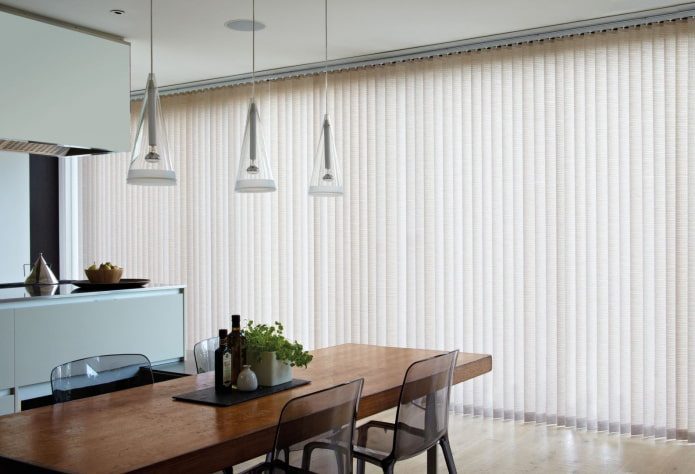
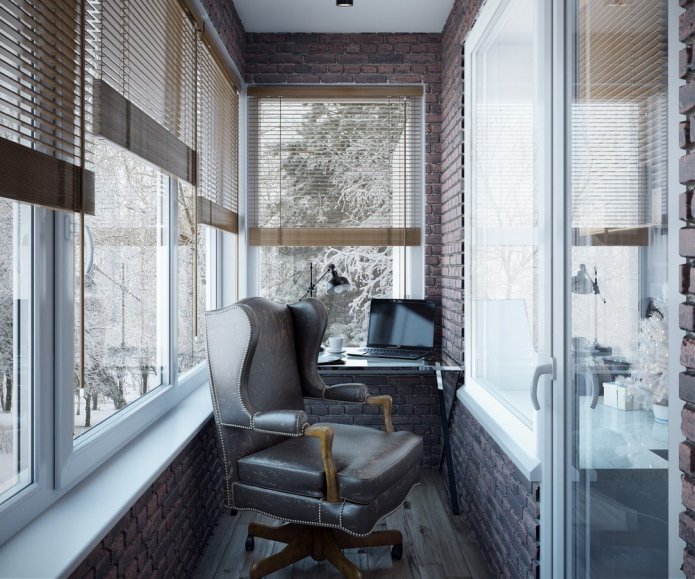
Advantages and disadvantages
The main pros and cons of using them in the interior.
Horizontal blinds have many mounting options. They are very convenient, practical and allow you to save a lot of space.
How to choose window blinds?
Several nuances for choosing:
- Blinds with wide slats can be used for large windows or for interior partitions.
- Narrow slats are best used for interiors with small windows.
- For small rooms, laconic horizontal designs on the floor of the window are ideal, they look neat and do not overload the space.
- When choosing rotary vertical models, you should pay special attention to their length. It is desirable that the distance between the slats and the floor be at least five centimeters.

What types of blinds are there?
There are two types of blinds, which are determined by the type of arrangement of the slats:
- Vertical blinds, thanks to their functional and aesthetic qualities, such models will perfectly suit any interior of the room.
- Horizontal blinds are a classic and most popular option. A huge variety of materials allows you to successfully select a design for any window shape and room area.


The photo shows a spacious living room with a bay window.
Other types of window blinds
Another group is distinguished by visual and functional features:
- Pleated;
- Multi-textured;
- Photo blinds.
Let’s look at the description of each type in more detail.
Pleated
They are a corrugated accordion fabric that can be attached to the window with Velcro. Such models are very convenient and compact, and when assembled, they are practically invisible on the window opening. Often used on roof windows.
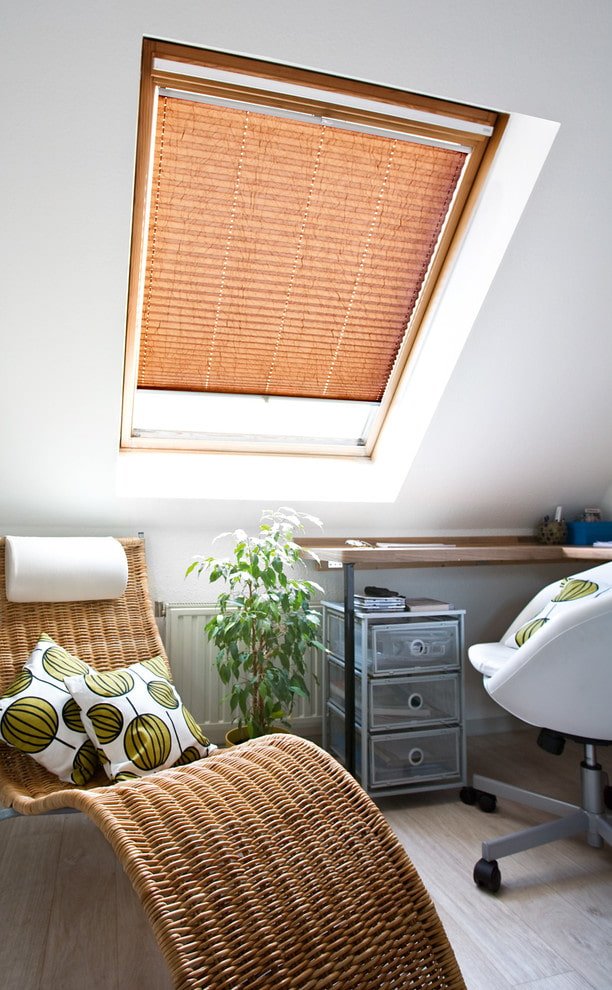
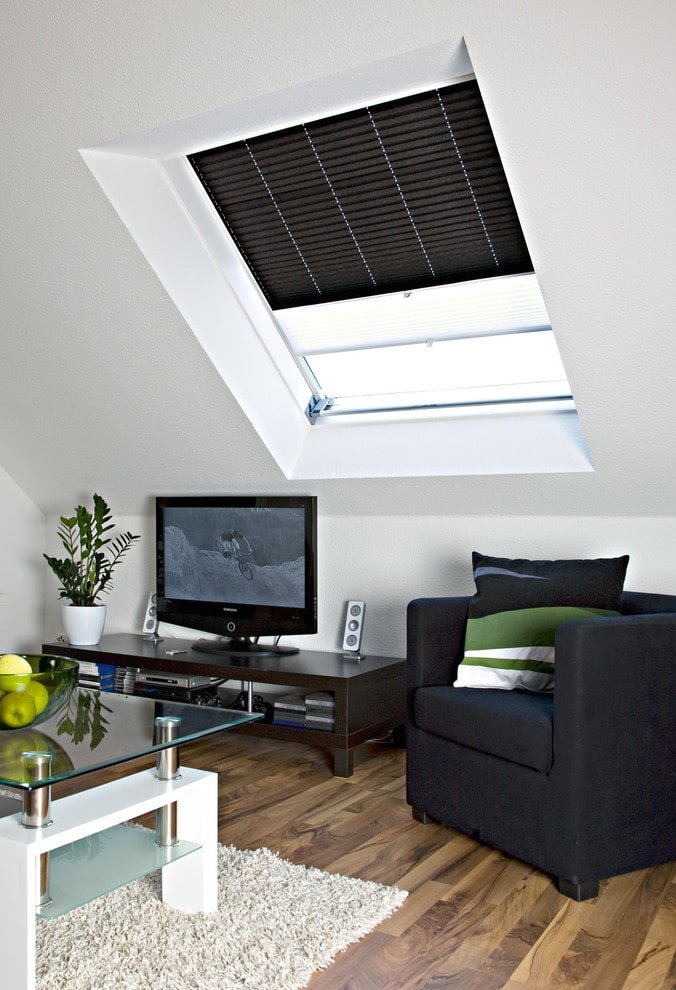
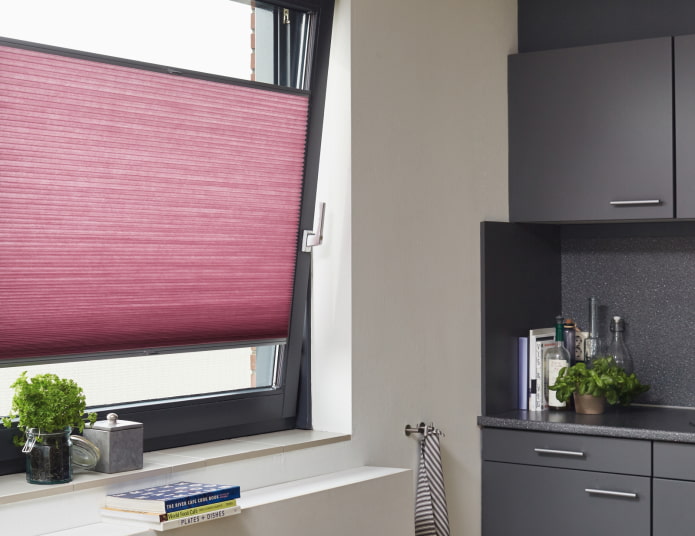
In the photo, a window sash decorated with bright corrugated pleats allows you to ventilate the kitchen without unnecessary movements.
Multi-textured
Thanks to the combination of combined slats from various materials, such a design can decorate any interior and give it a very stylish look.
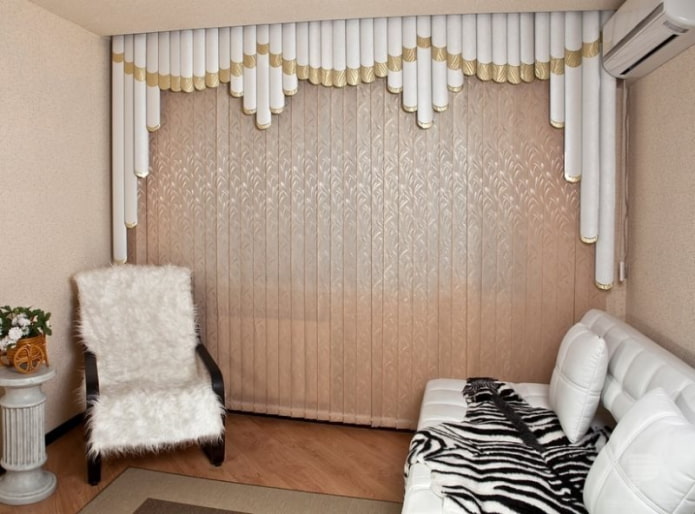
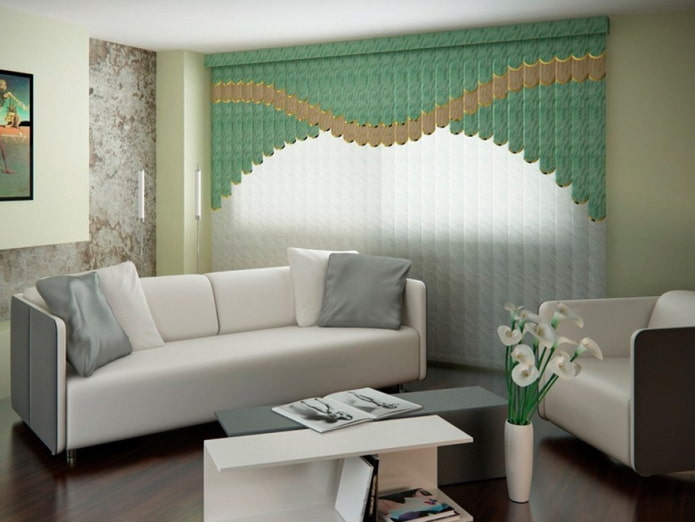
Photo blinds
The slats with a colorful realistic image applied to them look very original and emphasize the appearance of the window, giving the interior a creative touch.
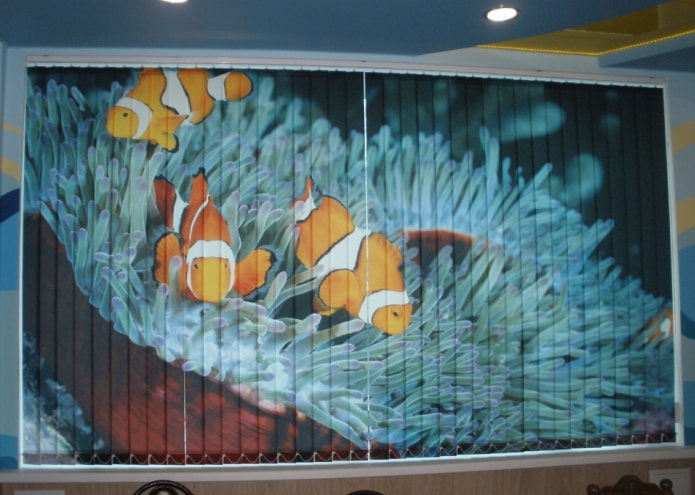
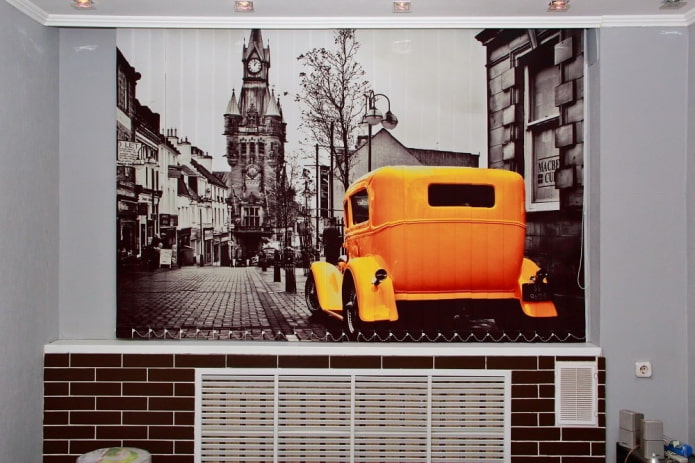
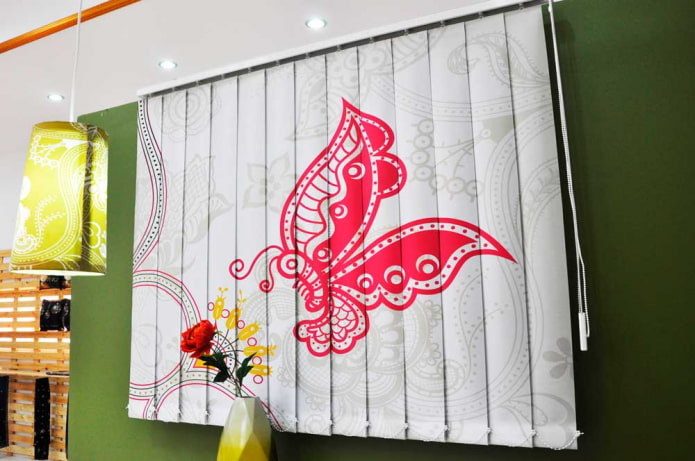
The photo shows vertical slats with a photo print in the form of a butterfly.
Types of fasteners
Let’s consider the types window blind mounts:
- Outside the window opening (wall, ceiling). This option allows you to visually enlarge the room or a narrow window.
- Interframe. Suitable for horizontal slats or pleated blinds. Thanks to this type of mount, it is possible to securely fix the structures on the frame.

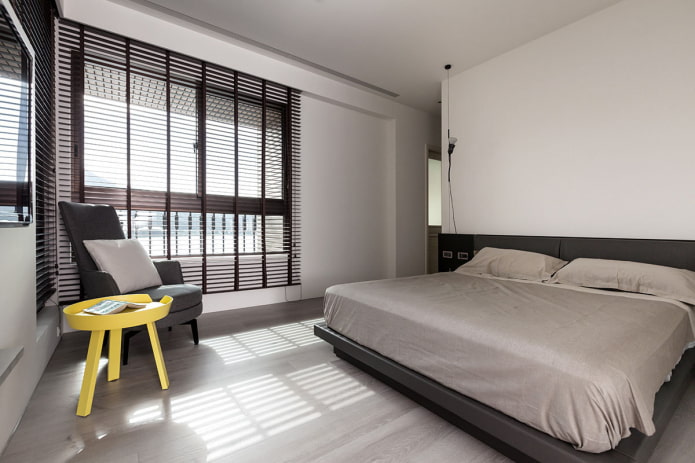
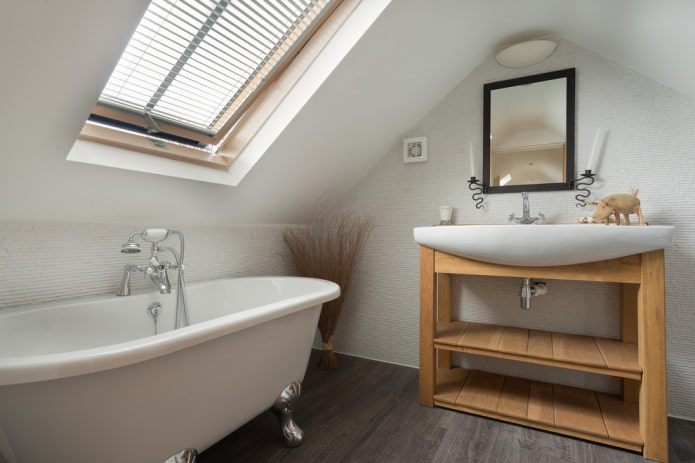
Control methods
There are several options for lowering or raising blinds.
- Mechanical. The most common method. Adjustment is carried out with a cord, chain, control handle.
- With an electric drive (automatic). This implies the movement of the structure using a special remote control, which allows you to lower, raise, move the slats to the side or even change their angle of position from a distance.
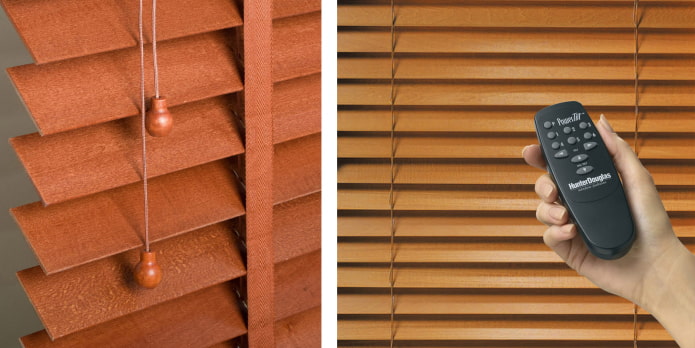
Material of slats for blinds
A variety of materials are used to make slats.
- Paper. The most common paper option is pleated blinds. They look great as an independent decorative element, and also go well with curtain structures.
- Fabric. Such models have a good antistatic effect, they are quite easy to wash, and thanks to a huge color palette, they look stylish and fit into any interior.
- Bamboo. Designs made of highly environmentally friendly material are lightweight, do not deform, do not fade in the sun and have an attractive natural texture.
- Aluminum. Reliable and very practical. They are not subject to wear and tear, are not afraid of moisture and temperature changes.
- Wood. Wooden products are strong, durable and environmentally neutral, but have a fairly high price.
- Plastic. It is easy to care for, has a wide range of colors and a more affordable price.
- Rope. Light flowing threads will add airiness to the room. Due to the absence of lower weights and a chain, such structures beautifully develop in the wind.
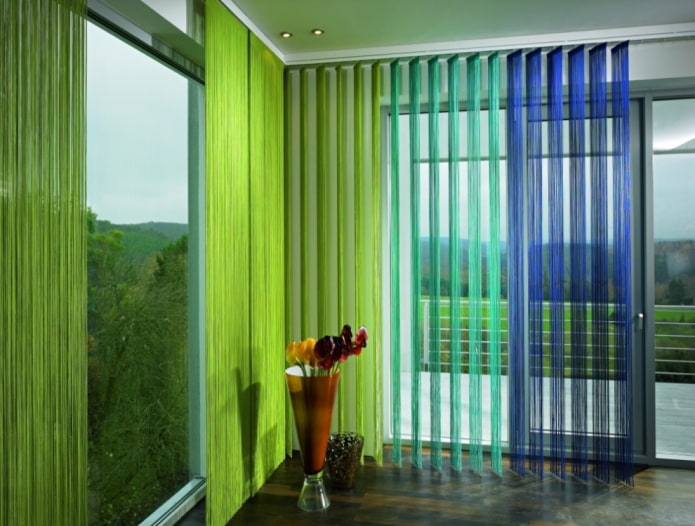
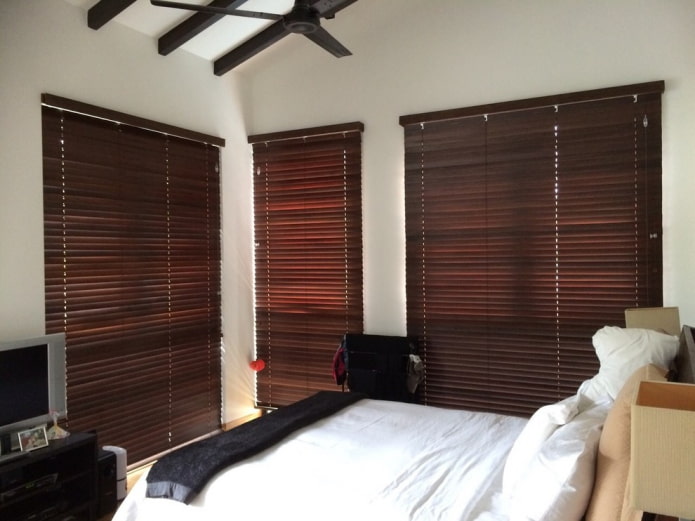
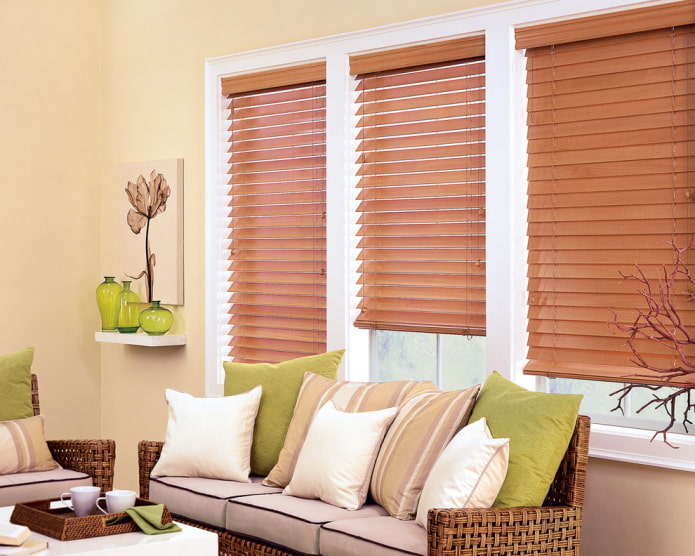

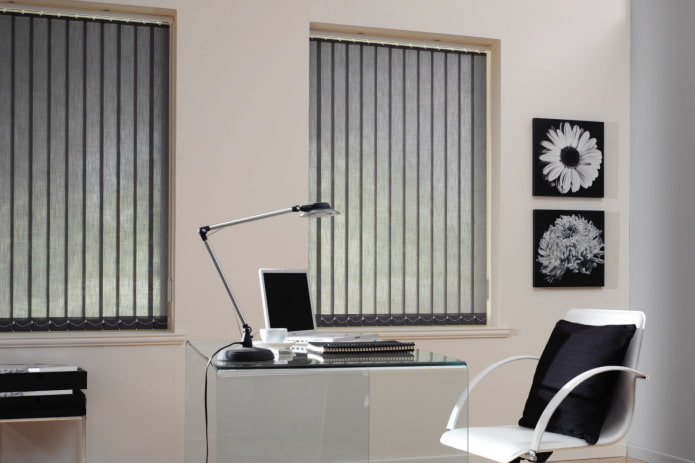
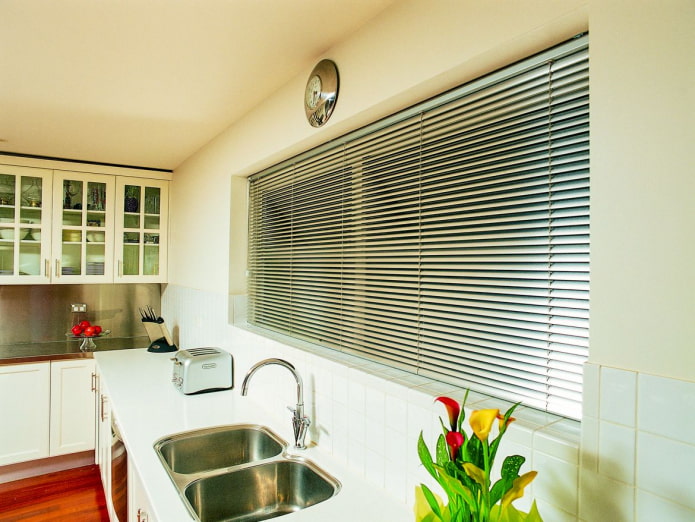
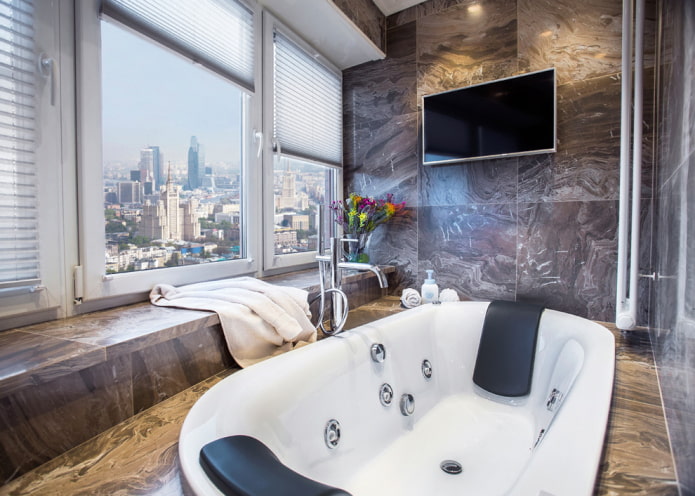
The photo shows white blinds on a large window with a beautiful view of the city in the bathroom interior.
Classification by size
There are main length options:
- Short. Allows you to save space and provide free access to the window and windowsill.
- Long. They look great on panoramic or French floor-to-ceiling windows.
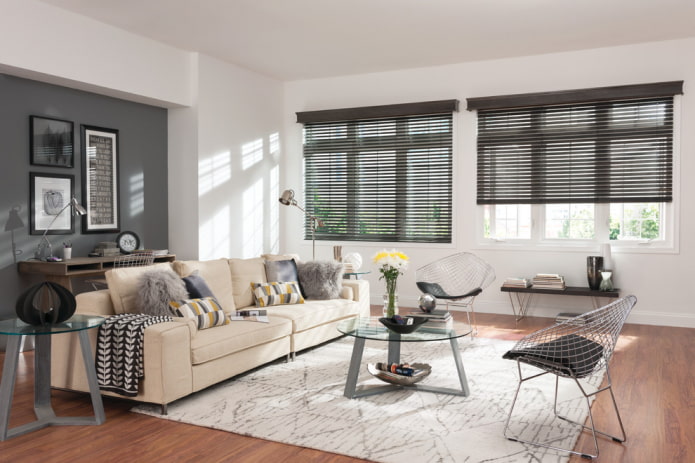

What styles are they best used in?
The use of sun protection blinds for interiors in various styles has no limits.
Wooden slats covered with clear varnish. They will create a pleasant atmosphere in the room and will not spoil the natural beauty of Provence with their appearance.
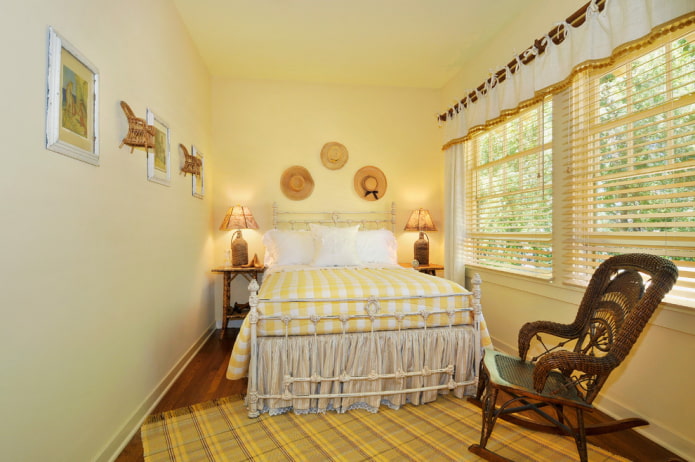
The photo shows light wooden slats in a bedroom in the Provence style.
And for a loft-style interior, aluminum or plastic blinds in light colors are suitable. Such models will look very stylish and will preserve the feeling of wide space in the room.
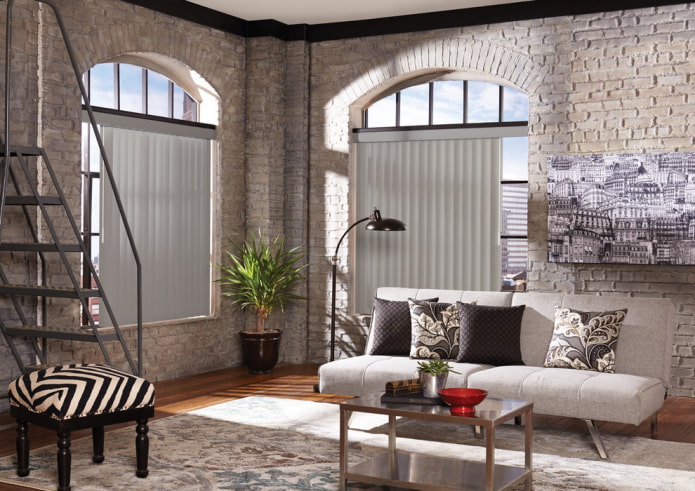
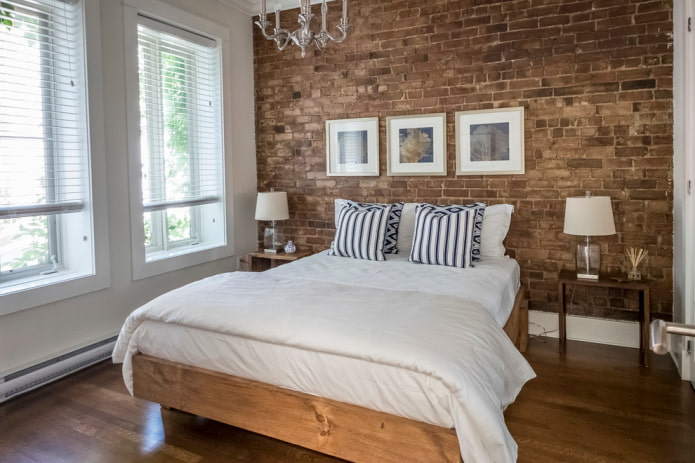
In a modern style, the main thing is that the blinds match the color scheme of the room and effectively combine with the textures of the surfaces.
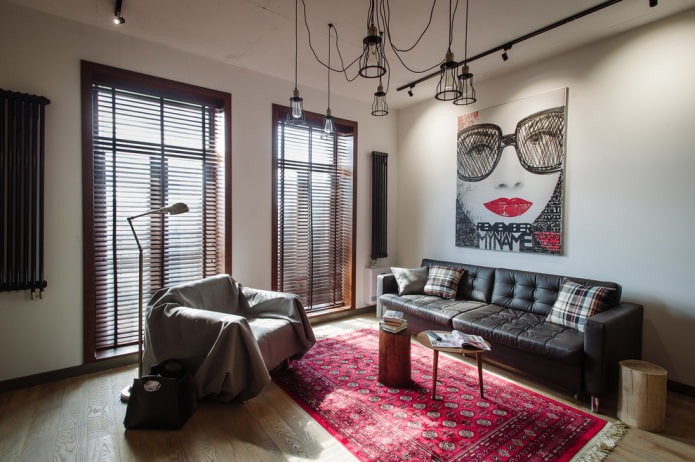
The photo shows wooden blinds in the interior of a living room in a modern style.
Metal overhead, perforated or reflective structures of silver, gold, steel, bronze colors will not stand out from the general background and will perfectly emphasize the interior in the hi-tech style.
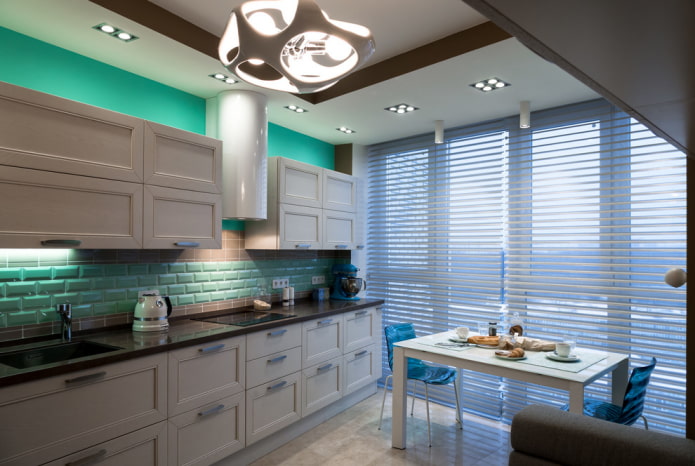
The photo shows silver horizontal slats on kitchen in high-tech style.
When decorating a room in a classic style, you can use both horizontal and vertical planks of light shades, which will be repeated in the interior decor.
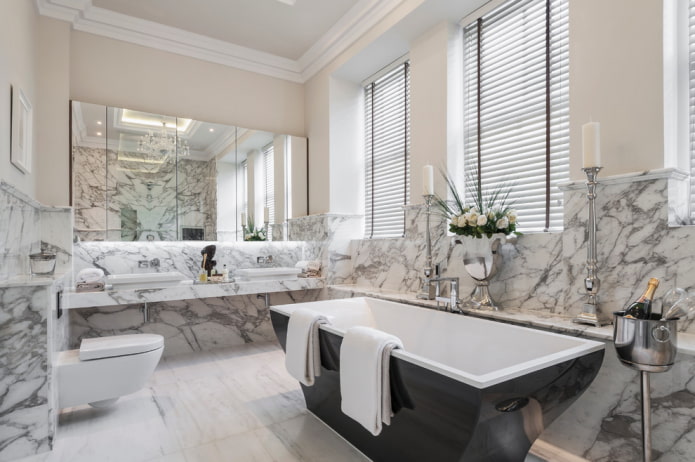
For a Scandinavian interior, the main criterion for choosing is color – white, black and white or gray colors dominate. Horizontal blinds are suitable, they emphasize the originality of the Scandinavian style.
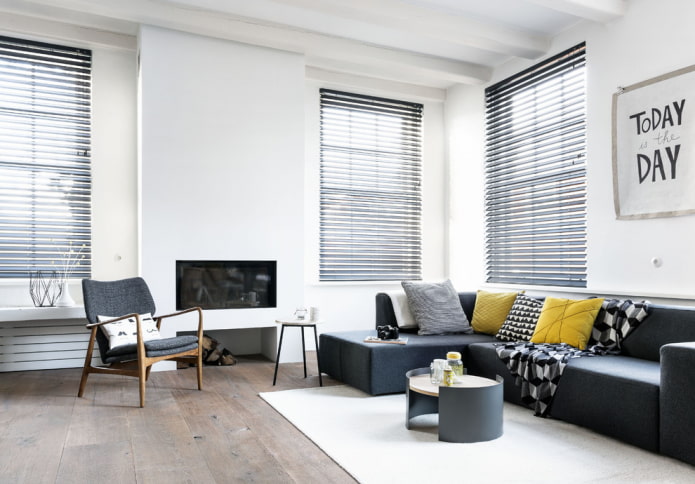
Color palette
Certain colors create a unique design and give the room the necessary lightness, freshness or depth.
Red or burgundy slats look strict and respectable, but at the same time they add brightness and individuality to the room.
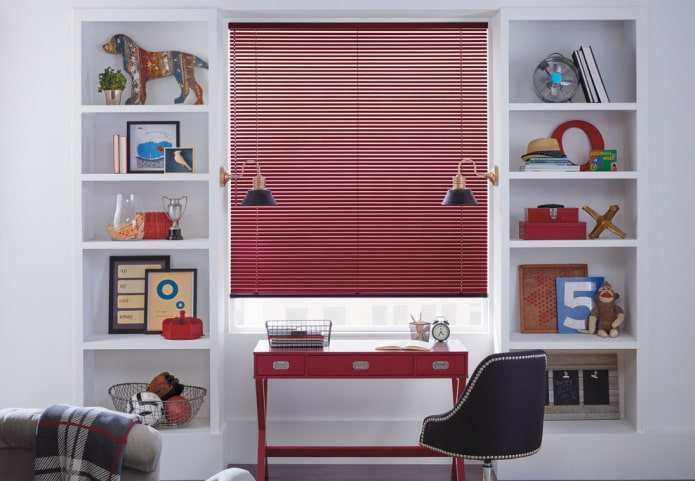
The photo shows red horizontal slats in the interior of the nursery.
A room with brown slats creates a solid and noble, but very cozy interior.
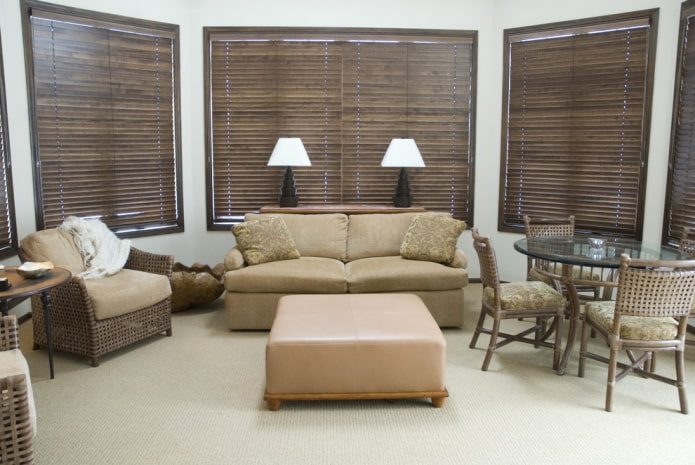
Green is the main favorite of modern design. Green planks give the room an attractive and expressive look.
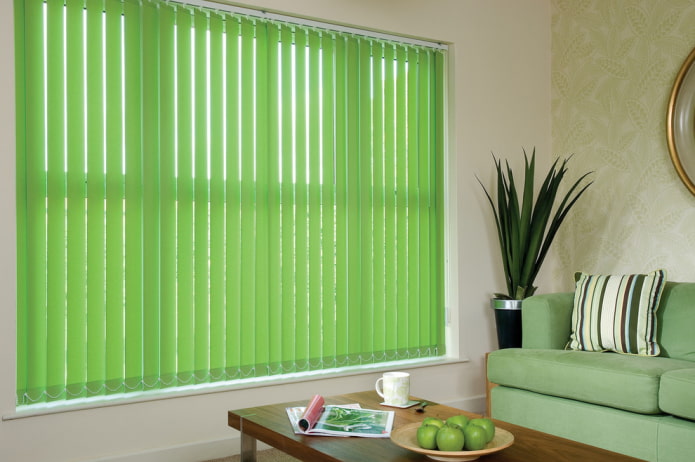
The photo shows a living room and bright vertical slats of green color.
Blue looks fresh and stylish. Blue or light blue blinds create a soft, gentle, but at the same time deep interior.
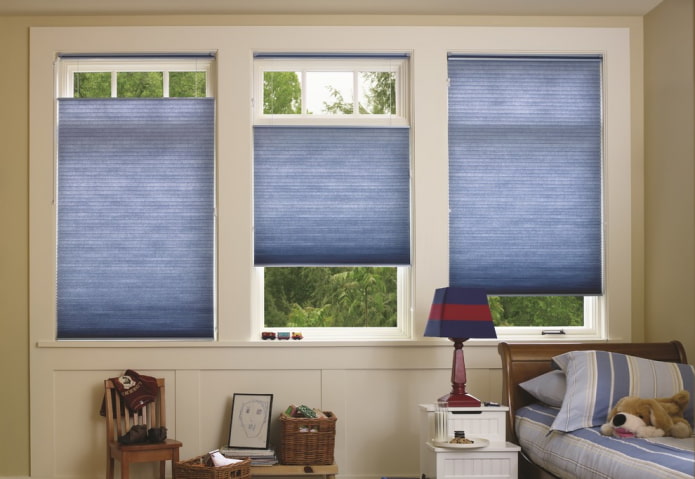
Yellow is cheerful and bright. This sunny shade adds warmth and light to the room.
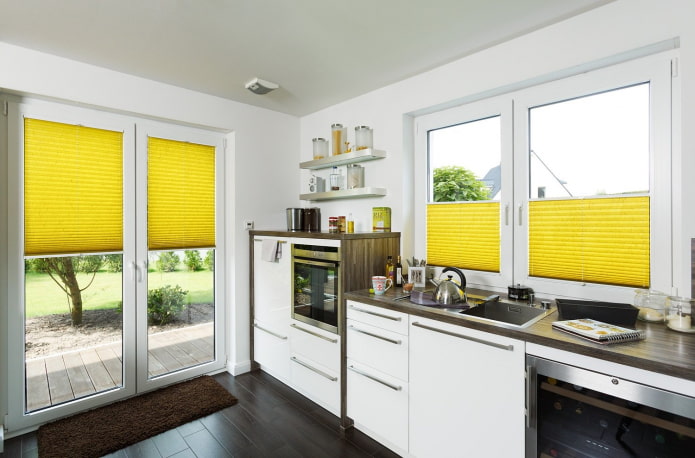
The photo shows a kitchen with a door and window opening decorated with yellow pleated blinds.
The golden color belongs to the warm color range, so it adds even more space and light to the room.
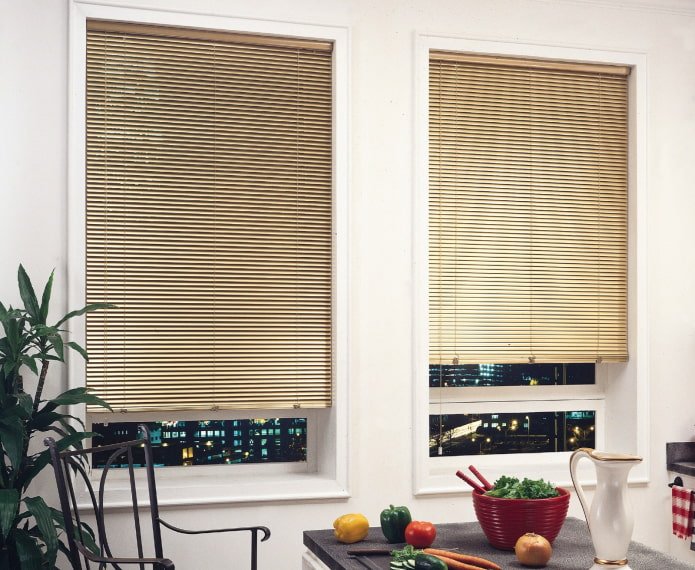
Orange brings dynamism to the interior of the room and creates a sensual, carefree and cheerful atmosphere.
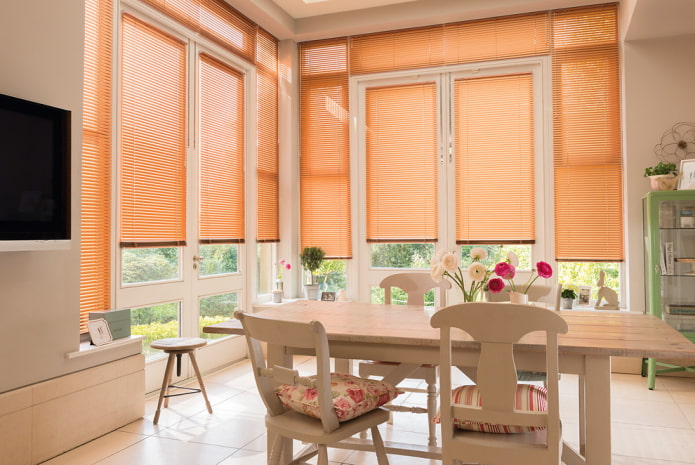
The photo shows orange vertical blinds in the interior of the dining room.
The white slats look very expressive and stylish, and make the light penetrating through them even brighter.
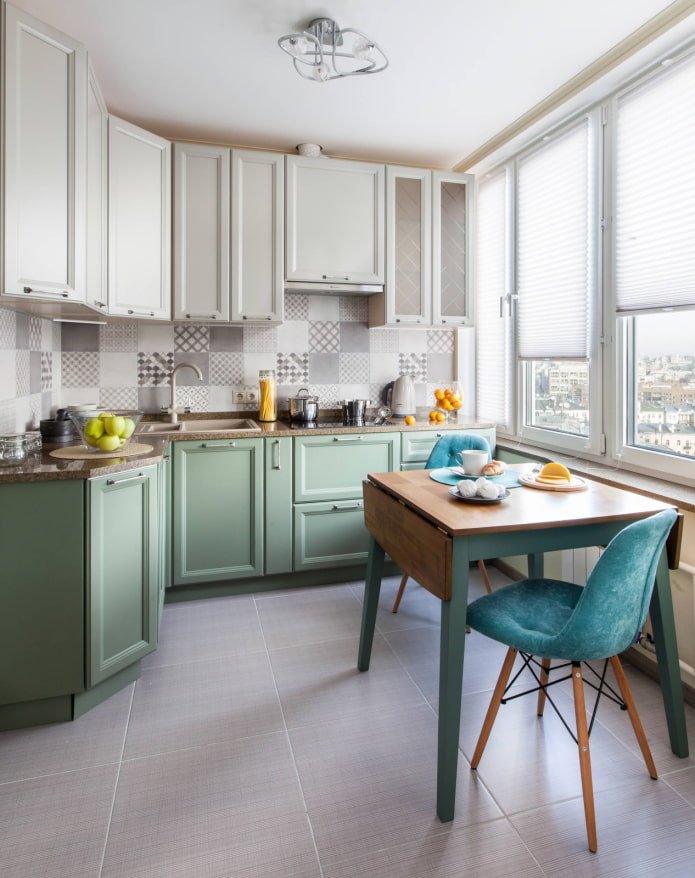
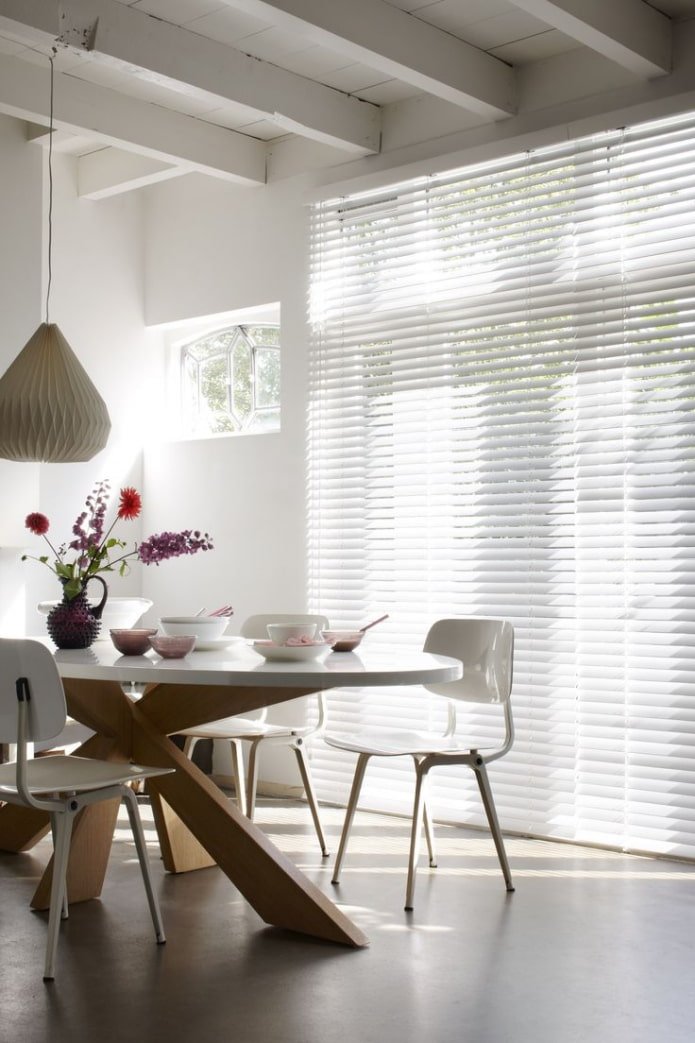
Stylish black color adds a touch of piquancy to the interior, such blinds look very strict and ascetic and create a monolithic design.
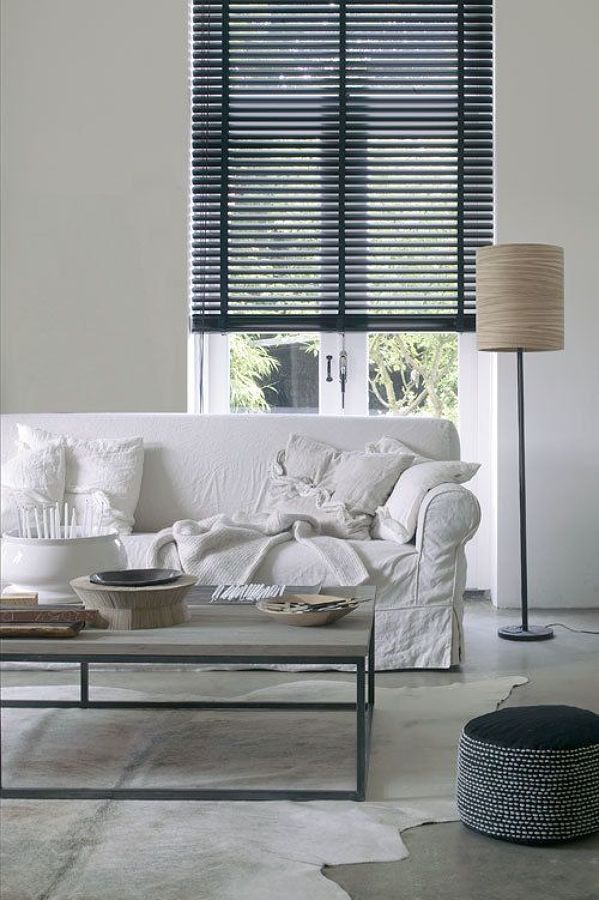
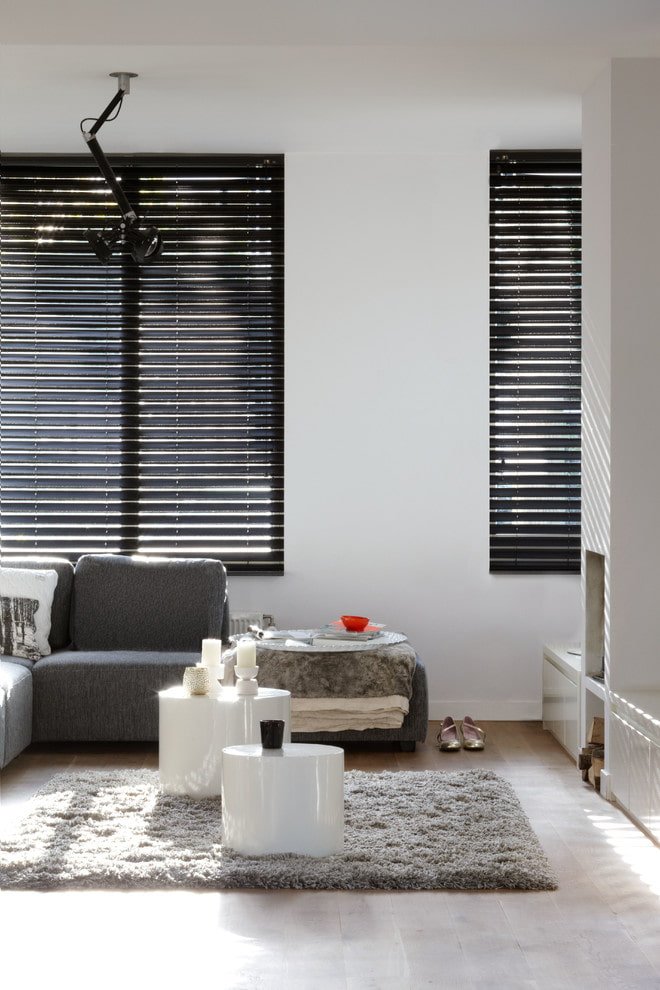
Beige is an enveloping and relaxing color, it calms and creates a favorable atmosphere in the room.
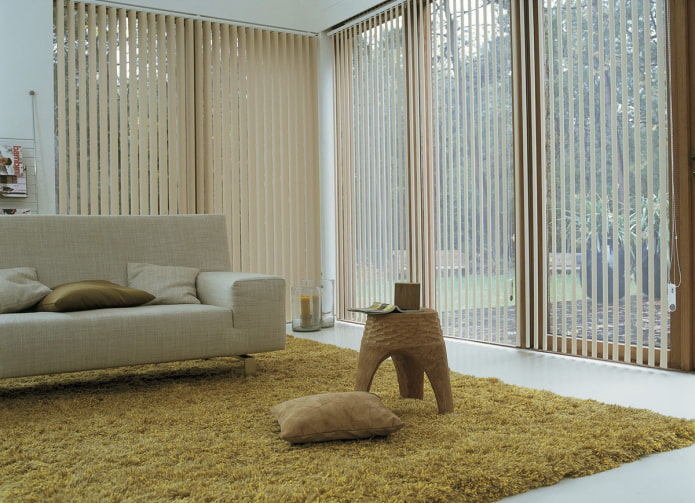
Elegant gray designs do not distract attention and harmoniously combine with the general background of the room.
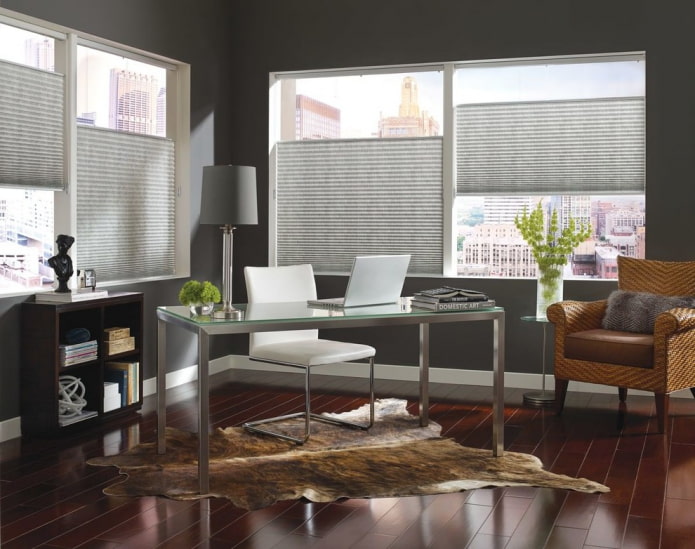
The photo shows window openings with gray pleated blinds in the interior of the office.
Pink shades create a particularly elegant and delicate interior.
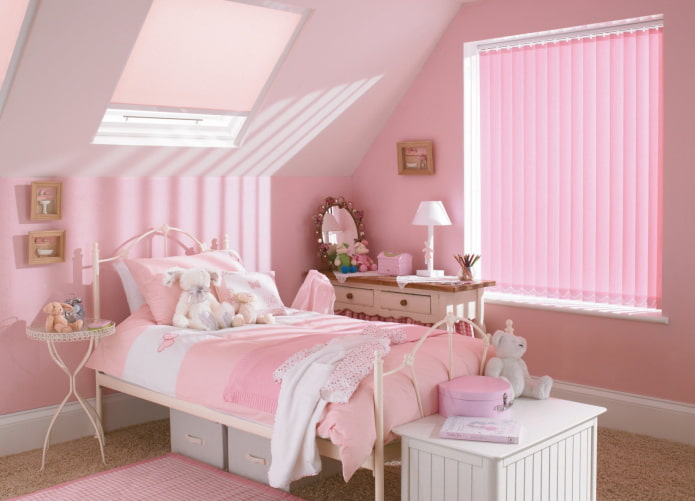
The photo shows pink vertical blinds in a nursery for a girl.
Now reading:
- Provencal style hallway: 50 interior photos and design ideas
- key tips for storing potatoes in an apartment without a cellar.
- Podium in the interior: 70 current photos and creative solutions for an apartment.
- 15 Best Plants for Creating a Hedge: Choose Wisely!
- Comprehensive Guide to Buying a Used Peugeot RCZ